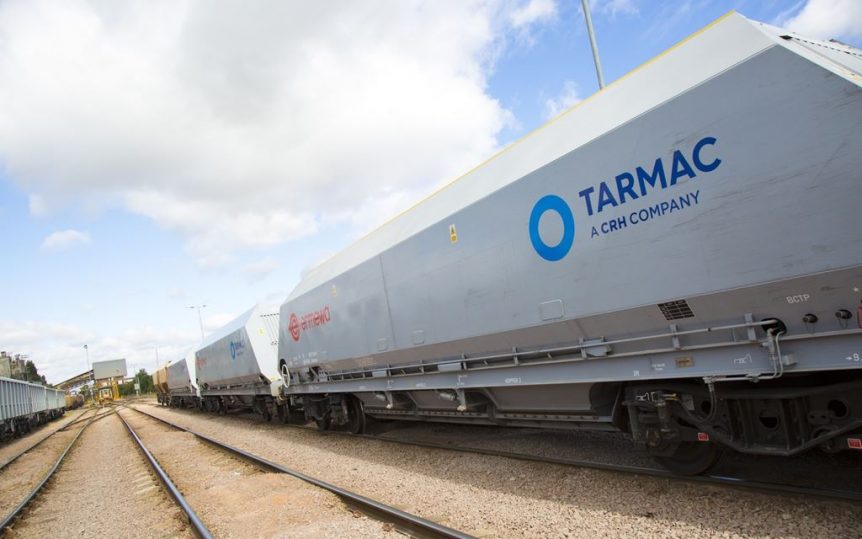Tarmac promotes collaboration to support improved rail freight

Tarmac, the UK sustainable building materials and construction company, is collaborating with the University of Derby to explore the potential of rail freight to meet the UK’s net zero carbon ambitions. The forthcoming academic reports will, according to the company, further advance the environmental credentials of rail freight and the bulk materials industries. Both ambitions are aligned with Tarmac’s ongoing focus on optimising its use of the rail network.
Doing freight better was the keynote of Tarmac’s head of rail, Chris Swan, as he addressed the Rail Freight Group at their recent online Scottish conference. With passenger demand on the UK network suppressed, Swan says there is an opportunity for freight operations to be permanently reformed. The pandemic has provided timetable capacity for recasting the way freight is scheduled, and Tarmac is supportive of the industry’s efforts to take the positives from this opportunity, at the same time as promoting more sustainable business practices.
Information at the heart of the collaboration
At the heart of the collaboration between Tarmac and the University of Derby and other industry partners, Swan says the industry is building the debate around more than technical advances. “Doing freight better, and with better quality information, is how we can run the railway better in the short term”, he says. “Getting better real time information, to help drivers operate more efficiently; better information for train planners for more environmental scheduling’, and continuing to push for bigger trains, says Swan, can add up to significant overall improvements.

The concept of ‘a little a lot’ works well for Tarmac, and, says Swan, doesn’t require a big technological nor business breakthrough to make a substantial difference. Swan suggests as an example, the practice of looping freight trains, to allow passenger services to run punctually, could be better addressed. He says the environmental impact of bringing a heavy freight train to rest, idling and then restarting is not fully appreciated. “Does stopping a 2500 tonne freight train make environmental sense? Going forward, there will be more room in the timetable to better schedule freight trains without built in delays”, he says. “Whereas passenger services run to a prescribed timetable – because that’s the reliability the market demands – freight trains tend to run as necessary, answering a different commercial demand. If we can recast and improve the way we schedule and operate freight, then we can minimise the environmental impact of operations. Tarmac already operates in a sector that is making significant strides in reducing carbon emissions, and our collaboration with the University of Derby seeks to examine all operational aspects.”
Complex relationships promote complicate decisions
While not advocating an American-style ‘freight first’ policy, Swan nevertheless has entered into the academic study, with the intention of finding ways of making Britain’s mixed-traffic railway run with more equity towards a growing freight sector. “The relative benefits of longer trains that can’t go into a loop, and can’t accelerate away from rest quickly suggest that the priority decisions of the past could be revisited and updated to better serve both sectors.”

The complex relationship between the public, the economy, the network and the rail freight sector is not tampered with easily. Network Rail’s Project SPEED is one way of hastening enhancements, but Swan says Tarmac will work around constraints. “We don’t want to see freight get in the way of a passenger recovery, but taking this opportunity to make decisions on the margins makes all sorts of sense”, says Swan. “Proactively, we can look at the opportunities presented, the questions that need to be answered, and to ask again what we want rail freight to do, what we need the sector to contribute to the economy and what is the sector’s overall value to the nation.
“Developing our rail freight capability and capacity is key to our operations and aligns with the national agenda to deliver a low-carbon built environment. We’re continually exploring and embracing innovations which support our efficient delivery of the right materials to the right place for customers”, added Swan.
Tarmac and the University of Derby anticipate making their research findings available later this summer.
You just read one of our premium articles free of charge
Want full access? Take advantage of our exclusive offer





Great news for Railfreight, more slow lines or dynamic loops to allow freight to keep rolling is the answer.